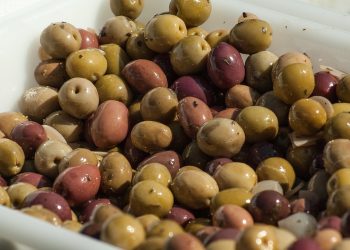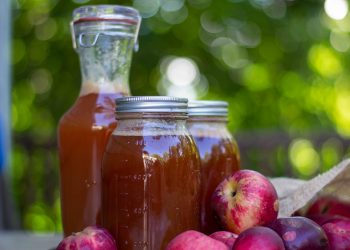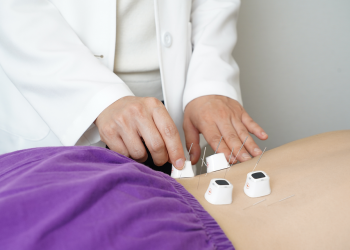Joints stiffness cinnamon is a simple phrase that points to a surprising ally: cinnamon’s potential to ease joint pain and morning tightness. It names a practical approach — combining movement, diet, and a warming spice — that many people use to move more freely. If your daily rhythm is interrupted by locking knees or sore fingers, this matters to your independence, your mood, and your sleep.
This article lays out seven clear ways cinnamon can help, grounded in science, tempered with caution, and wrapped in real-life tips you can try tonight. You’ll get recipes, safety notes, and expert context so you can make a smart choice — not a guess.
Contents
7 Ways Joints Stiffness Cinnamon Eases Pain
Below are seven direct, usable effects cinnamon can have on unhappy joints. Each point is practical. Each one is something you can test safely in small steps.
1. Warms Muscles And Boosts Circulation
Warmth relaxes tight tissue and encourages blood flow. Applied as a warming paste or enjoyed in a hot beverage, cinnamon increases local circulation and soothing warmth around stiff joints.
That warmth is not just comforting. Improved circulation brings oxygen and nutrients to cartilage and soft tissue. When your body receives that, stiffness often loosens enough for you to move without hesitation.
2. Lowers Inflammatory Signals
Cinnamon contains active compounds that influence inflammatory pathways. Lab research shows molecules like cinnamaldehyde can reduce inflammatory markers in cellular models, which is why many health professionals mention the spice as part of an anti-inflammatory plan.
Reducing inflammation won’t erase every ache overnight, but when swelling drops even a little, range of motion expands and morning stiffness shortens.
3. Blunts Pain Signals
Some components in cinnamon have an analgesic effect — meaning they can dampen pain nerve signaling. That’s why a cinnamon rub or a soothing cup sometimes yields real, immediate relief for surface aches.
It’s not a substitute for medical pain control when you need it. But for everyday stiffness that nips your mobility, a spice-based approach can be a gentle complement.
4. Protects Tissues From Oxidative Stress
Antioxidants are the body’s cleanup crew. They neutralize free radicals that damage cartilage over time. Cinnamon is rich in antioxidant compounds that support protective processes in joints, helping tissues resist wear and tear.
That protection matters most when stiffness is chronic. Over months, a diet that favors antioxidants can slow the march from mild stiffness to disabling loss of motion.
5. Supports Metabolic Balance
Blood sugar spikes and metabolic inflammation feed into joint pain. Cinnamon is one of the few culinary spices shown to help with insulin sensitivity and glucose control in some trials.
When you stabilize blood sugar, inflammation often falls. Less metabolic stress means less pressure on joints and a lighter, more fluid step.
6. Helps Control Low-Grade Infection And Supports Repair
Low-level infections or delayed tissue repair can keep a joint unhappy. Cinnamon has mild antimicrobial properties that support local healing when used as part of a broader care plan.
Think of it as one small tool in a toolbox: it won’t cure a deep infection, but it can help the body clear minor irritants while you address the bigger issue with your clinician.
7. Improves Mood And Encourages Movement
Scent and ritual matter. The aroma of cinnamon is uplifting. A simple evening ritual — warm spiced milk, a short rub with cinnamon-coconut paste, gentle stretching — can reduce anxiety about movement and motivate you to keep moving.
Movement is medicine for stiffness. Anything that makes motion feel accessible will reduce the cycle of pain, guarding against the gradual decline that comes from avoidance.
How Cinnamon Works: The Science
Researchers have isolated compounds in the spice that affect inflammatory pathways like NF-kB and cytokine production. Animal and cell studies show reduced swelling and pain behaviors after cinnamon extracts are applied or administered. Human trials are fewer, but clinical nutritionists and some rheumatology reviews highlight promising results for metabolic benefits and inflammation markers.
If you want to read more, PubMed and university research pages summarize the biochemical work on cinnamon’s active compounds. Those summaries help explain why people feel better when they add the spice intentionally.
How To Use Cinnamon Safely
Practical steps matter. The right form and the right dose make the difference between helpful and harmful.
- Choose Ceylon (true) cinnamon when possible, because it has far less coumarin than Cassia cinnamon. Coumarin can damage the liver in high amounts.
- Start small. Use a teaspoon in tea or a dash in yogurt. Test for sensitivity before topical use.
- For topical use, mix ground cinnamon with a carrier like coconut oil to create a paste. Apply for 10–15 minutes and then wash off. Do a patch test first.
- Avoid concentrated essential oils undiluted on skin. They can burn.
- If you take blood thinners or blood sugar medication, check with your clinician before adding daily cinnamon. It can amplify drug effects.
Simple Recipes And Routines
You don’t need fancy products. Here are easy ways to fold the spice into action.
- Morning Stir: Add a teaspoon of ground cinnamon to your oatmeal or smoothie for a gentle metabolic benefit.
- Nighttime Warmth: Warm a cup of milk (dairy or plant) with cinnamon and a pinch of turmeric. Sip before gentle stretches.
- Warming Paste: Combine two teaspoons of Ceylon cinnamon with one tablespoon of coconut oil to make a spreadable paste. Warm slightly, apply to knees or wrists, leave 10 minutes, then rinse. Use once every other day to start.
- Aromatic Compress: Add a teaspoon of cinnamon to hot water, soak a towel, wring, and wrap around the stiff joint for 10 minutes.
Consistency beats intense, sporadic experiments. Little rituals done daily change tissue responses over weeks.
Precautions And Interactions
Spices are powerful. Don’t assume “natural” means risk-free.
- Watch liver health with high amounts of Cassia cinnamon because of coumarin.
- Monitor blood sugar if you’re on diabetes meds; the spice can lower glucose and interact with treatment.
- If you have sensitive skin, topical mixes can irritate. Always patch-test.
- Essential oils should be diluted heavily — they are not the same as ground spice.
Talk with your primary care clinician or pharmacist about interactions. They will help you integrate the spice into your care safely.
Real People, Real Relief
I hear stories from readers who swapped a morning coffee for a warm spiced drink and noticed less joint locking an hour after waking. Others found that a brief evening rub reduced the need for over-the-counter pain relievers on several days a week.
These are small, practical shifts. They don’t replace x-rays, physiotherapy, or arthritis medications when those are needed. But they give people options that feel nurturing, accessible, and within their control.
Evidence And Expert Views
Clinicians and nutrition scientists generally agree: the laboratory science is strong on anti-inflammatory and antioxidant activity, and emerging human studies show metabolic benefits that are relevant to joint health. Major health organizations encourage dietary patterns rich in spices, vegetables, and omega-3 fats as part of an overall anti-inflammatory lifestyle.
If you want to take a deep dive, university pages and medical centers offer readable reviews that summarize the evidence and give practical dosing advice.
Bottom Line
If stiffness keeps you from the life you love, small, safe changes matter. Combine movement, sleep, and a thoughtful dietary approach. Adding cinnamon in modest amounts can bring warmth, inflammation-reducing compounds, antioxidants, and a ritual that nudges you to move more.
Try one simple change this week: a nightly cup with a teaspoon of ground Ceylon cinnamon and ten minutes of gentle stretching. Watch how your mornings respond over the next month. If you feel better, build from there. Ask your doctor about interactions and long-term use. You’re not chasing a miracle — you’re stacking small, sensible wins.
Take that step. Your joints will thank you.
FAQ
Is cinnamon safe to use for stiff joints every day?
In small culinary amounts, cinnamon is generally safe for most people. Choose Ceylon when using daily and discuss it with your clinician if you take blood thinners or diabetes medications.
Can I apply cinnamon directly to my skin?
Use a diluted paste with a carrier oil and do a patch test first. If you feel burning or irritation, wash off and do not repeat. Essential oils must be diluted heavily or avoided on broken skin.
How soon will I notice a difference?
Some people feel short-term warmth and mild pain relief within one use. For sustained reduction in morning tightness and inflammation, give dietary and topical changes several weeks and combine them with gentle exercise.
Should I stop my medications in favor of this approach?
No. Treat this as an adjunct, not a replacement. Work with your clinician to coordinate any changes.
Which type of cinnamon is best?
Ceylon cinnamon is preferred for daily use due to its lower coumarin content. Cassia is common and flavorful but should be limited.
References
National Institutes of Health (NIH) provides research summaries and articles on cinnamon’s biological effects and safety. (http://www.ncbi.nlm.nih.gov)
Harvard T.H. Chan School of Public Health discusses spices, anti-inflammatory diets, and practical nutrition guidance. (http://www.hsph.harvard.edu)
Mayo Clinic offers clinical information on interactions, supplement safety, and practical patient guidance for using herbal products. (http://www.mayoclinic.org)
Arthritis Foundation provides lifestyle strategies and evidence-based approaches for managing joint stiffness and pain. (http://www.arthritis.org)
Get Your FREE Natural Health Guide!
Subscribe now and receive our exclusive ebook packed with natural health tips, practical wellness advice, and easy lifestyle changes — delivered straight to your inbox.















